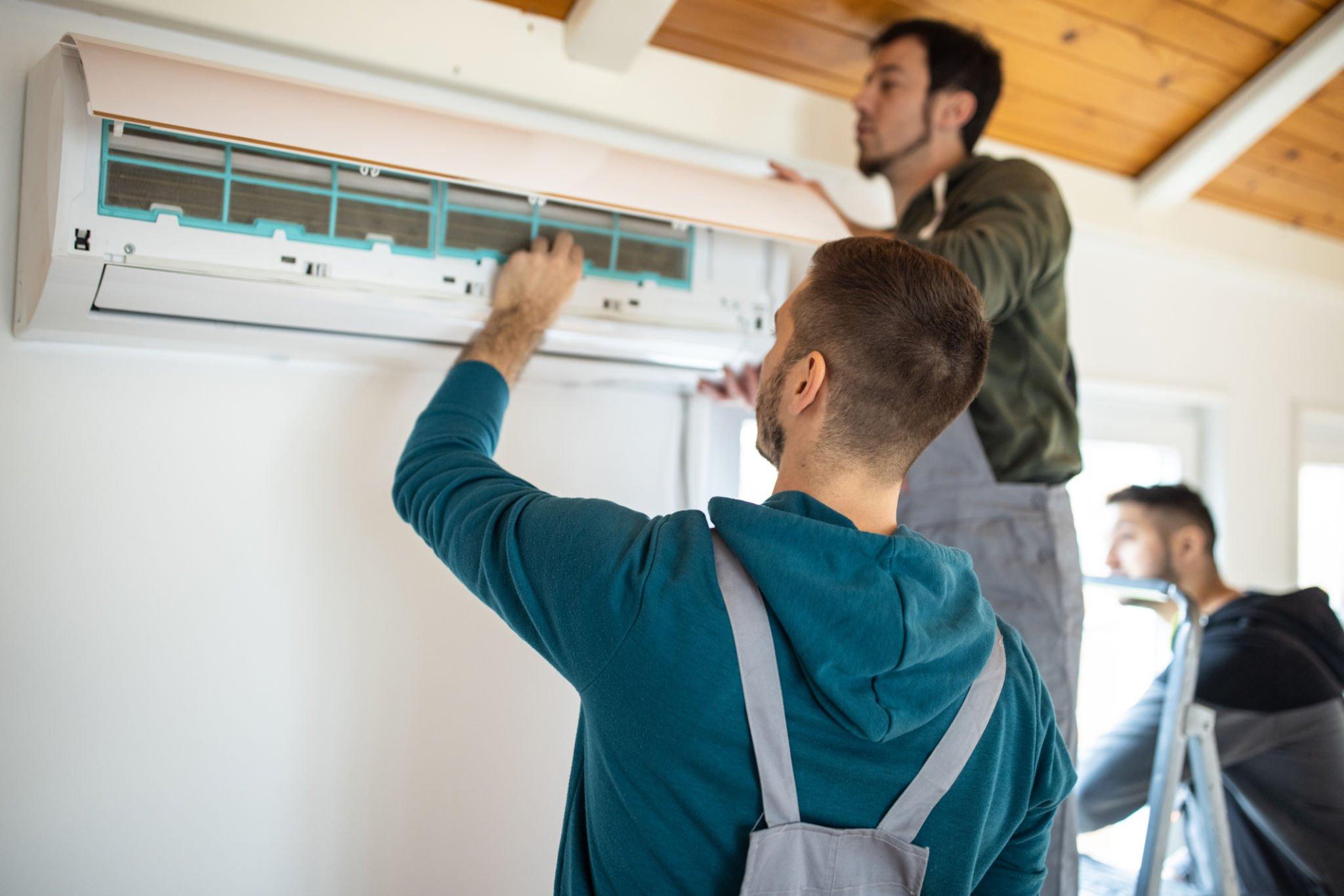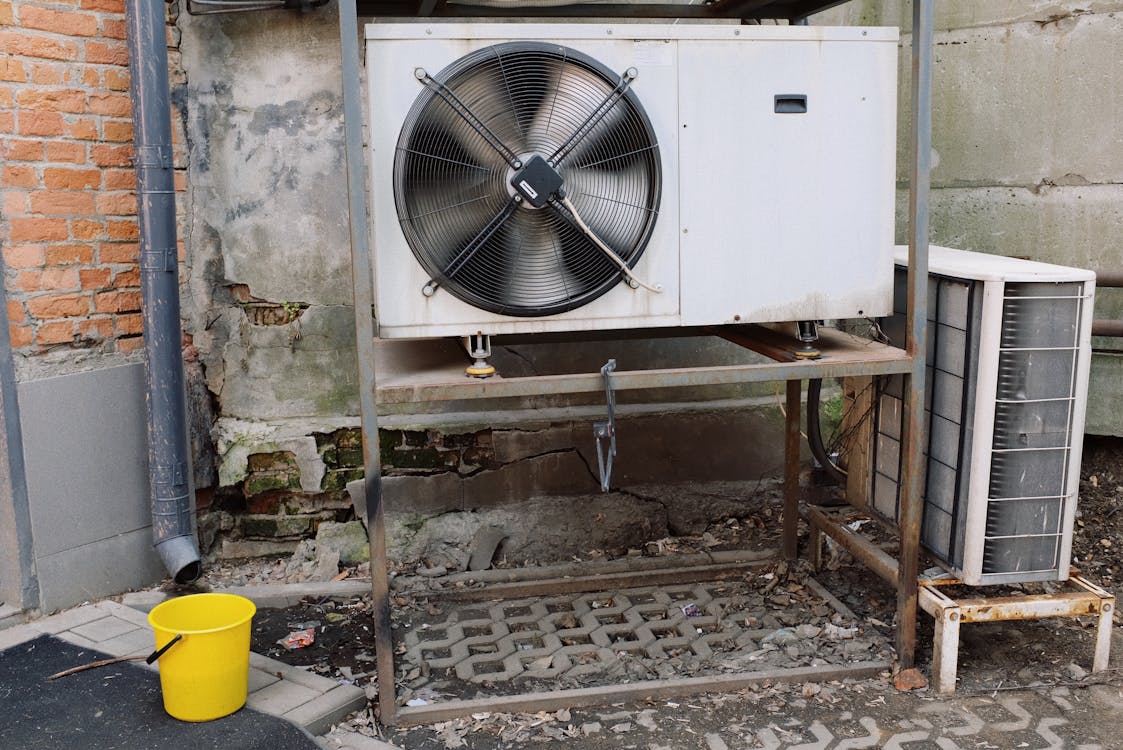How To Maintain & Repair an HVAC System
Your HVAC system is essential for maintaining a comfortable indoor environment, whether it’s the heat of summer or the chill of winter. Like any other system, regular maintenance and timely repairs are crucial to keeping it running efficiently.

While professional servicing is highly recommended, there are several tasks you can perform to maintain your HVAC system and ensure it operates at its best. Here’s a comprehensive guide on how to maintain and repair your HVAC system.
Contents
1. Regularly Replace or Clean Air Filters
One of the easiest and most important maintenance tasks is regularly replacing or cleaning your HVAC system’s air filters.
Dirty filters restrict airflow, forcing the system to work harder and reducing its efficiency. Additionally, clogged filters can cause poor indoor air quality and strain the system, potentially leading to breakdowns.
Maintenance Tip: Replace disposable filters every 1-3 months, depending on use and indoor conditions. If your system uses reusable filters, clean them as directed by the manufacturer.
2. Inspect and Clean the Outdoor Unit
The outdoor condenser unit can collect debris like leaves, grass, and dirt, which can block airflow and reduce efficiency. Regularly inspecting and cleaning the outdoor unit helps maintain proper heat exchange and prevents unnecessary strain on the system.
Maintenance Tip: Clear any debris from around the unit and use a garden hose to gently wash the fins. Ensure there’s at least a two-foot clearance around the unit for optimal airflow. Avoid using high-pressure water, which can damage the fins.
3. Check and Seal Ductwork
Leaky or poorly sealed ducts can lead to significant energy loss, reducing your HVAC system’s efficiency and leading to uneven heating or cooling. Inspecting your ductwork for leaks or damage is an important part of maintaining your system’s overall performance.
Maintenance Tip: Look for visible holes, gaps, or disconnections in your ducts. You can seal minor leaks with duct tape or mastic sealant. For extensive repairs or hidden leaks, consider hiring a professional to inspect and seal the ductwork.

4. Test the Thermostat
A malfunctioning thermostat can cause your HVAC system to run inefficiently or fail to maintain the desired temperature. Testing your thermostat regularly ensures it is reading the temperature accurately and controlling the system properly.
Maintenance Tip: Check your thermostat settings and make sure it’s set to the correct mode (cool or heat) and temperature. For greater control, consider upgrading to a programmable or smart thermostat, which can optimize your system’s performance and reduce energy costs.
5. Clean the Evaporator and Condenser Coils
The evaporator coil (inside) and condenser coil (outside) play a critical role in heat exchange. Over time, these coils can collect dirt, reducing their ability to absorb or release heat, which lowers the efficiency of your HVAC system.
Maintenance Tip: Clean the condenser coil annually using a garden hose, and remove dirt from the evaporator coil inside with a soft brush. If the coils are heavily soiled, it’s best to call a professional technician for a thorough cleaning.
6. Repairing Common HVAC Issues
Despite regular maintenance, HVAC systems may still experience issues that require repairs. Here are a few common problems and tips on how to address them:
- No airflow or reduced airflow: Check if the air filter is clogged and replace it if necessary. Ensure that vents and registers are not blocked by furniture or debris.
- AC is not cooling or heating is insufficient: Inspect the thermostat and check for dirty coils or refrigerant leaks. For refrigerant issues or system malfunctions, call an HVAC technician.
- Strange noises or smells: Unusual sounds may indicate loose parts or mechanical issues. Burning smells can signal electrical problems. In both cases, turn off the system and contact a professional for repairs.
7. Schedule Professional Maintenance
While DIY maintenance is crucial, it’s also important to schedule professional HVAC maintenance at least once a year—preferably in the spring for cooling systems and fall for heating systems.
A technician can perform a comprehensive inspection, identify potential problems early, and fine-tune your system for optimal performance.

Professional Services Include:
- Inspecting and cleaning internal components, including the blower motor, fans, and coils.
- Checking refrigerant levels and testing for leaks.
- Calibrating the thermostat and testing system efficiency.
- Lubricating moving parts and tightening electrical connections.
Maintaining and repairing your HVAC system doesn’t have to be overwhelming. By regularly cleaning air filters, inspecting ducts, testing the thermostat, and keeping coils free of dirt, you can ensure your system runs efficiently year-round.
However, for more complex repairs and annual tune-ups, it’s always best to call a professional HVAC technician. Routine maintenance and timely repairs will not only extend the life of your HVAC system but also save you money in the long run.

